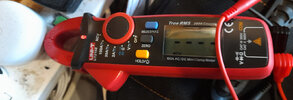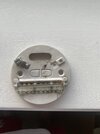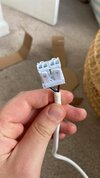We should have red or brown line, and blue or black neutral, however this is a pain with multi-core cables, as you want to work out which is permanent line and which is switched line, so using twin and earth with brown and blue and over covering the blue with brown sleeve or tape is generally a better idea, same with three core, but these covers often fall off or were never put on, so we need to note what goes where before we dismantle a ceiling rose we need to take notes or mark the wires.
Failing this one can use a tester, I use one of these

handy as it has non contact voltage and current testing, but even a bulb on two wires can be used, however in the main I open the switch and see how that is wired.
Years ago there was a reasonably standard wiring, and comparing one ceiling rose to another would help work out what colours that electrician used, but today there are so many options, using triple and earth to the switch means one can use the third wire for a neutral or a two way system latter without need for new cables, smart switches either need a neutral, batteries, or pass current through the bulb all the time even when off, so common now to have neutral at the switch.
But it may be just a spare wire for use latter, so what have you got to test with?
The problem is on a forum we have no idea of your skill, and 230 volt is dangerous if not handled with care, laying out a step by step instructions it is too easy to either miss some thing in the telling or in the reading, so it needs general instructions, so you understand what you are doing.
I would to start with turn off all power and get my wife to flick light switch while I test wires to find out which are the switch wires, then mark them. I would put the wires in a connector block so they can't in error touch anything, main thing can't touch me, and test to earth to find out which is permanent line using the meter shown. Or use the non contact tester if I can't trust earth wires are actually earth.
But a non contact tester can give false results, so one has to use some judgement as if likely correct or not.
In hind sight take pictures first, but now you need to decide if you have the skill to keep yourself safe, if not, get an electrician to sort it.
The big question is why you have a triple and earth cable, we expect three cables, power in, power to next lamp, and switch wires, but why is one three core? My first thing would be look at the switch, and then if not three core there, look at other ceiling roses.









